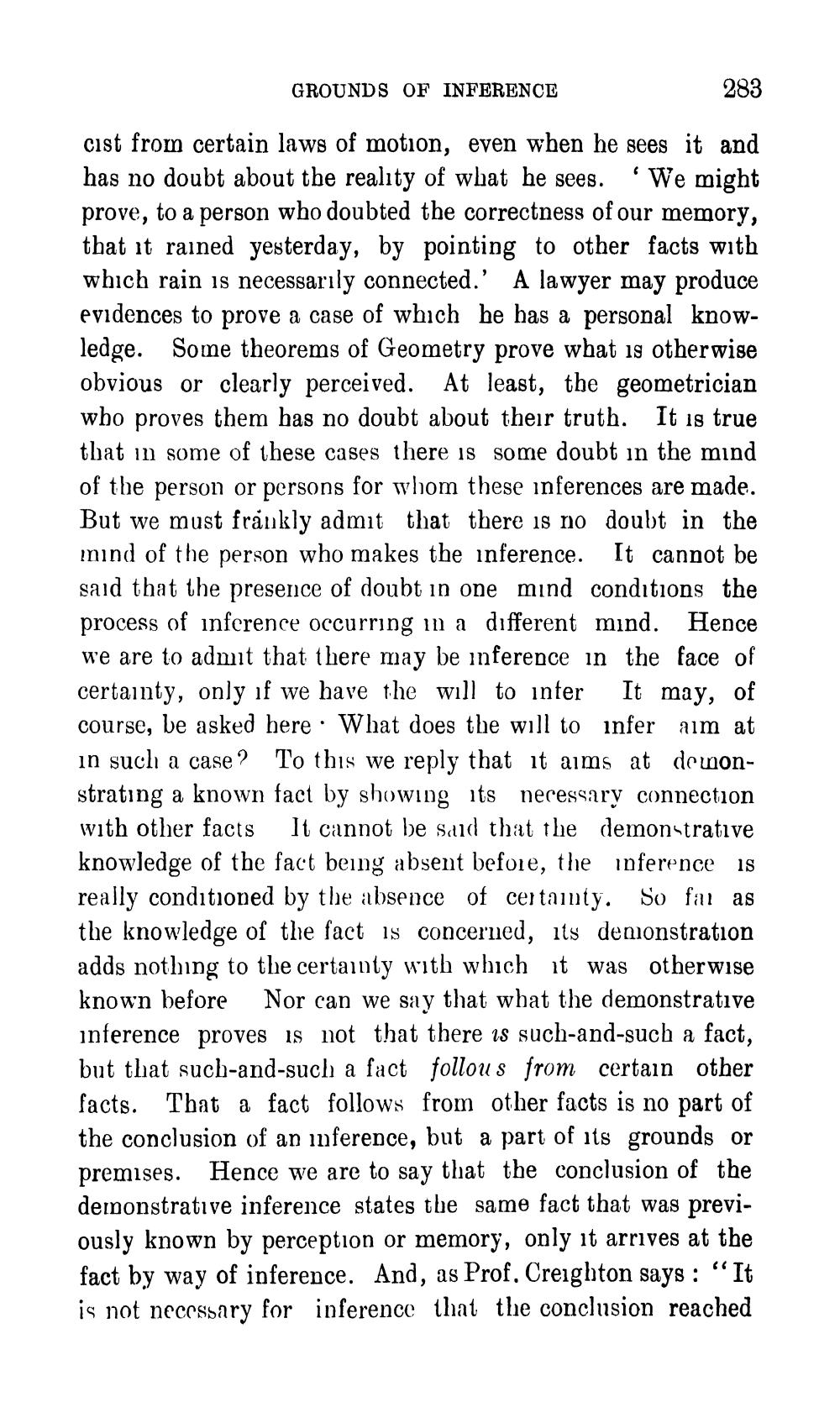________________
GROUNDS OF INFERENCE
283
cist from certain laws of motion, even when he sees it and has no doubt about the reality of what he sees. 'We might prove, to a person who doubted the correctness of our memory, that it rained yesterday, by pointing to other facts with which rain is necessarily connected.' A lawyer may produce evidences to prove a case of which he has a personal knowledge. Some theorems of Geometry prove what is otherwise obvious or clearly perceived. At least, the geometrician who proves them has no doubt about their truth. It is true that in some of these cases there is some doubt in the mind of the person or persons for whom these inferences are made. But we must frankly admit that there is no doubt in the mind of the person who makes the inference. It cannot be said that the presence of doubt in one mind conditions the process of inference occurring m a different mind. Hence we are to admit that there may be inference in the face of certainty, only if we have the will to inter It may, of course, be asked here. What does the will to infer aim at in such a case? To this we reply that it aims at denonstrating a known fact by showing its necessary connection with other facts It cannot be said that the demonstrative knowledge of the fact being absent before, the inference is really conditioned by the absence of certainty. So far as the knowledge of the fact is concerned, its demonstration adds nothing to the certainty with which it was otherwise known before Nor can we say that what the demonstrative inference proves is not that there is such-and-such a fact, but that such-and-such a fact follous from certain other facts. That a fact follows from other facts is no part of the conclusion of an unference, but a part of its grounds or premises. Hence we are to say that the conclusion of the demonstrative inference states the same fact that was previously known by perception or memory, only it arrives at the fact by way of inference. And, as Prof. Creighton says: “It is not necessary for inference that the conclusion reached




